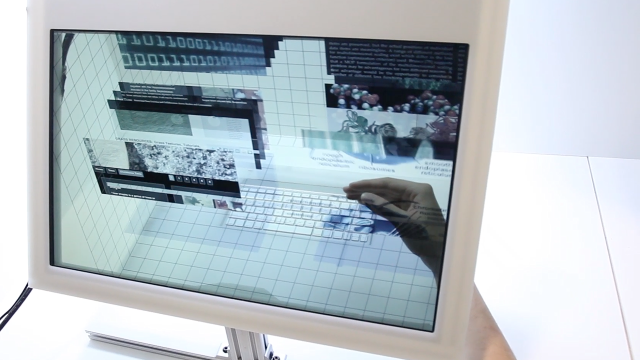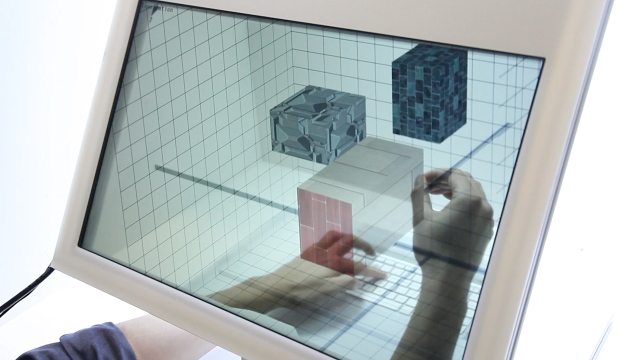A graduate student at MIT has developed a 3D computer interface that could radically alter the way we interact with personal technology. As Wired reports, Jinha Lee's SpaceTop 3D desktop breaks the two-dimensional barrier within which today's laptops and tablets have long been contained, allowing users to "reach inside" their computers and move around documents and browser windows using only their hands.

Powered by a transparent LED, Lee's system combines gesture controls and 3D graphics to create an illusory box-like environment. The desktop also features two onboard cameras — one that follows a user's hand gestures, and one that tracks his eye movements and adjusts the interface angle accordingly. Users can therefore manipulate icons or applications by "grasping" at them from behind the display, or switch to the more traditional keyboard modality for 2D manipulations.

""With our two hands we’re reaching into the digital world.""
Lee presented his interface at this week's TED conference in Long Beach, California, alongside his ZeroN magnetic levitation system, which he unveiled last year. According to Lee, each of these developments represent the next frontier in interface design — a more aggressive convergence between the digital and the physical. This convergence, he says, will open up more lifelike avenues for multitasking, project collaboration, and a variety of augmented reality experiences.
"Programming the world will alter even our daily physical activities," Lee said onstage. “With our two hands we’re reaching into the digital world."
For now, SpaceTop is still in its early stages of development, and it remains unclear how long it would take to gain traction among consumers, many of whom have become conditioned to interact with their devices on a two-dimensional plane. The system would present obvious benefits to architects or designers collaborating on 3D projects, but Lee says SpaceTop's technology could have a dramatic impact on mainstream computing, as well.




